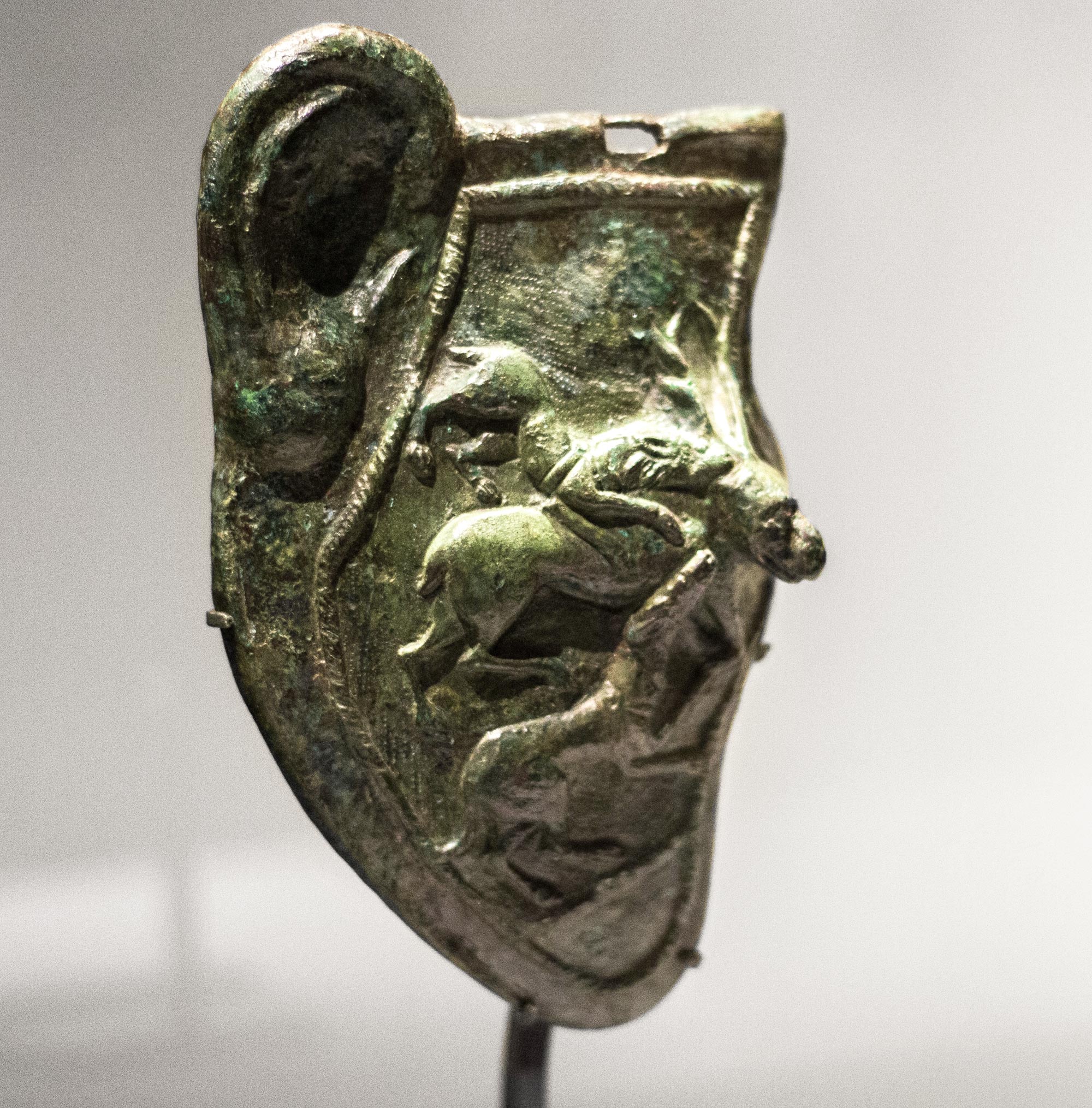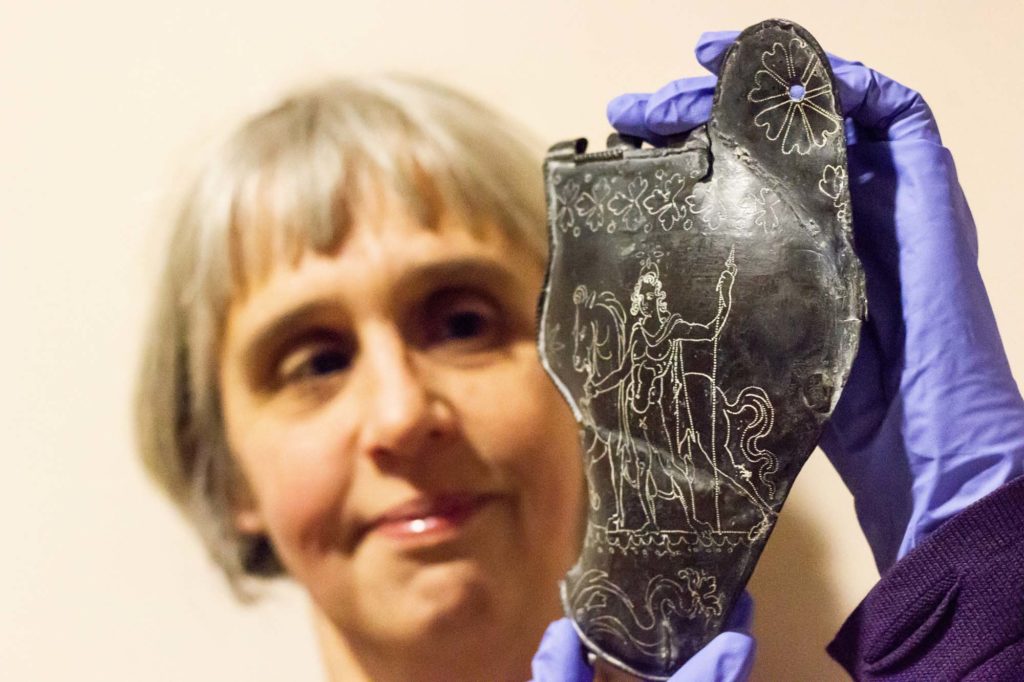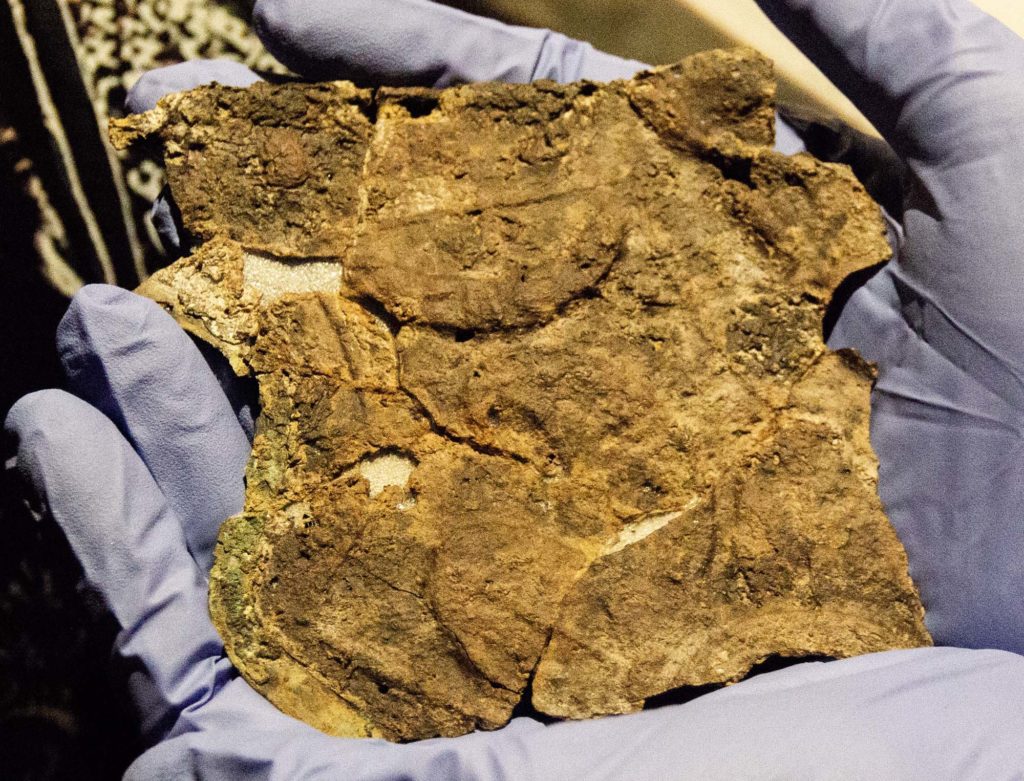DepthReading
The rare relics that reveal Roman helmet fashions at Hadrian’s Wall
The dog and stag cheek piece from a Roman helmet found at Hadrian’s Wall. Private collection
The ongoing archaeological discoveries at Hadrian’s Wall – from gold rings and preserved leather sandals to grave markers and writing tablets – are gradually telling us more and more about the lives of the soldiers and families who lived on Roman’s Northern Frontier nearly two thousand years ago.
At Segedunum Roman Fort and Museum in Wallsend they are exploring a very specific yet fascinating facet of this ongoing process via the varied decorations of the Roman helmet cheek piece.
The intricate decorations on Roman armour are often complex and deeply personal, and for archaeologists and public alike the embossed decorations on cheek pieces provide some fascinating insights into the soldiers who once wore and displayed them.
“Helmet cheek-pieces were small but important elements of Roman armour protection,” says Museum Manager Geoff Woodward, “and their style and condition can offer us a very personal connection with the soldiers that wore them.”
Alex Croom, Keeper of Archaeology, with a Roman cheek-piece found in River Tyne. Private collection.
They are also very rare. Being detachable they often don’t survive and a private, never before displayed, collection of scarce examples from the Roman world is helping to give visitors an idea of the great range and variety to be found in Roman helmets over the centuries and the level of detail they put into the decoration.
A fragment of an iron cheek-piece, which was excavated from Segedunum in 1998 is a particularly rare find as there are not many known decorated iron cheek-pieces, while another locally found cheek-piece, dredged from the mouth of the River Tyne in the Victorian period, (from a possible shipwreck or votive offering) is also included in the exhibition.
This piece is decorated with the Greco-Roman mythological twins, Castor and Pollux, whose expertise as horsemen and a legendary intervention at a battle on the banks of the Sagras made them a popular choice with cavalry men when decorating their armour.
“It’s an unusual decoration,” says Alex Croom, Keeper of archaeology at Tyne & Wear Archives & Museums of the rare find, “because usually these cheek pieces have an embossed decoration, but here this is done with little incised point marks drawing out some fascinating detail.
“But it is also very fascinating that you can see the use of this cheek piece; the helmet has obviously belonged to a second soldier at some time who has cut it down in size. The rosette over the ear has been cut off and a dolphin has lost its snout as it has been re-used. It is an absolutely gorgeous piece.”
Similarly a whole helmet on display has two different names punched into it, ‘Civilis’ and ‘Lucius Atilius Rufus’.
Roman soldiers were required to buy their own armour, so often those on a smaller salary may have obtained second hand armour that they altered to suit their own tastes.
Cavalry soldiers often had more decoration on their helmets as they were paid more than infantry soldiers. The decorations varied from floral or geometric designs to animals, military equipment, emperors trampling barbarians and deities. Commonly an ear was also incorporated into the elaborate designs.
The cavalry cheek-pieces on display include a dramatic depiction of two dogs attacking a stag, and an eagle attacking a cobra. Other examples feature Mars, the god of war, and Minerva, the Roman goddess of wisdom and strategic warfare.
Segedunum Roman Fort and Museum is on the original site of the actual Hadrian’s ‘Wall’s End’, and the extensively excavated archaeological site depicts the layout of a whole Roman fort where 600 infantry and cavalry soldiers were once stationed. Together with the surrounding port and settlement the fort effectively guarded the eastern end of Hadrian’s Wall.
As well as a 35m Viewing Tower, which delivers phenomenal views of the fort remains and across Tyneside, the museum explores the area’s Roman past with a Roman Gallery designed in the style of a Roman fort’s headquarters building and reimagined rooms of a cavalry trooper’s barrack, the remains of which can be seen on-site.
Category: English
DepthReading
Key words:



